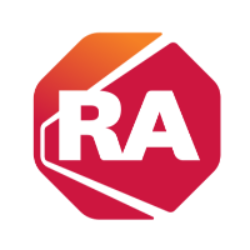Rockwell Automation demonstrates strong operational focus and solid order performance, but faces challenges in sales and currency impacts. The outlook remains positive with growth in key segments and a strong project pipeline, despite uncertainties in certain regions.
Analysis Date: February 10, 2025
Last Updated: March 12, 2025
Trailing Twelve Months (TTM) values provide a view of the company's performance over the last year.
Graham Value Metrics
Benjamin Graham's value investing approach focuses on finding stocks with a significant margin of safety between their intrinsic value and market price.
Intrinsic Value
Estimated fair value based on Graham's formula
$101.02
Current Market Price: $225.26
IV/P Ratio: 0.45x (>1.0 indicates undervalued)
Margin of Safety
Gap between intrinsic value and market price
-123.0%
Graham recommended a minimum of 20-30% margin of safety
Higher values indicate a greater potential discount to fair value
ROE: 26.79638759216439
ROA: 1.6812865497076022
Gross Profit Margin: 45.34114016238589
Net Profit Margin: 13.286511587660979
Trailing Twelve Months (TTM) values provide a view of the company's performance over the last year.
Strong Return on Equity
ROK's return on equity (ROE) of 26.80% indicates that the company is effective at generating profits from its equity.
Solid Gross Profit Margin
45.34%
Gross Profit Margin
A gross profit margin of 45.34% reflects ROK's ability to maintain profitability at the core operational level.
Moderate Operating Profit Margin
17.82%
Operating Profit Margin
With an operating profit margin of 17.82%, there is room for improvement in controlling operating expenses.
Net Profit Margin Indicates Pressure
A net profit margin of 13.29% suggests that after all expenses, ROK is left with a moderate profit, indicating potential pressure.
About Profitability Metrics
Profitability metrics measure a company's ability to generate earnings relative to its revenue, operating costs, and other relevant metrics. Higher values generally indicate better performance.
Return on Equity (ROE)
Measures how efficiently a company uses its equity to generate profits
26.80%
10%
15%
Higher values indicate better returns for shareholders
TTM (as of 2025-04-16)
Return on Assets (ROA)
Measures how efficiently a company uses its assets to generate profits
1.68%
3%
7%
Higher values indicate better asset utilization
TTM (as of 2025-04-16)
Gross Profit Margin
Percentage of revenue retained after accounting for cost of goods sold
45.34%
20%
40%
Higher values indicate better efficiency in production
TTM (as of 2025-04-16)
Net Profit Margin
Percentage of revenue retained after accounting for all expenses
13.29%
8%
15%
Higher values indicate better overall profitability
TTM (as of 2025-04-16)
Satisfactory Current Ratio
A current ratio of 1.08 indicates that ROK can cover its short-term liabilities with its short-term assets.
Strong Interest Coverage
An interest coverage ratio of 7.75 suggests that ROK can comfortably meet its interest obligations.
High Debt Levels
1.19
Debt-to-Equity Ratio
With a debt-to-equity ratio of 1.19, ROK is leveraging itself significantly, which could pose risks in adverse economic conditions.
Low Cash Ratio
A cash ratio of 0.14 indicates that ROK has limited cash reserves to meet short-term liabilities, which raises liquidity concerns.
About Financial Health Metrics
Financial health metrics assess a company's ability to meet its financial obligations and its overall financial stability.
Debt to Equity Ratio
Total debt divided by total equity
1.13x
1.0x
2.0x
Lower values indicate less financial leverage and risk
Less than 1.0 is conservative, 1.0-2.0 is moderate, >2.0 indicates high risk
Q1 2025
Current Ratio
Current assets divided by current liabilities
1.08x
1.0x
2.0x
Higher values indicate better short-term liquidity
Less than 1.0 is concerning, 1.0-2.0 is adequate, greater than 2.0 is good
Q1 2025


